Venus Cloacina: Roman Goddess Of Sewers And Drains
A. Sutherland - AncientPages.com - During the long course of their Empire (650 BC – 400 AD), the Romans worshiped many deities. They had gods everywhere and for almost every possible situation and action.
Cloacina - A goddess who presided over the sewer system in ancient Rome and drained the city's waste.
In Roman mythology, Cloacina was a goddess who presided over the sewer system in ancient Rome and drained the city's waste.
She was responsible for the system's smooth operation and patronized the workers who served the sewer. In a city as large as Rome, sewer problems were considered big trouble.
In ancient Rome, considerable importance was attached to Cloacina, identified with Venus. A coin was minted in honor of Cloacina, whose statue still exists in Rome. Besides, a small, round stone sanctuary was dedicated to the goddess.
Ancient Rome, nicknamed the 'Eternal City,' was a large city. Entertainment and foods were essential. However, a properly functioning sewage system played a crucial role, too.
In Roman mythology, we usually associate the goddess Venus with love, desire, sex, fertility, prosperity, and victory. Like other major Roman deities, Venus had several epithets that referred to her different cult aspects.
 Above: L. Mussidius Longus. 42 BC. AR Denarius (17mm, 4.04 g, 1h). Rome mint. Concordia's veiled, diademed bust. Below: Two statues of Venus Cloacina on a platform with balustrade of the Venus Cloacina's shrine. Crawford 494/42b; CRI 188a; Sydenham 1093a; Mussidia. source
Above: L. Mussidius Longus. 42 BC. AR Denarius (17mm, 4.04 g, 1h). Rome mint. Concordia's veiled, diademed bust. Below: Two statues of Venus Cloacina on a platform with balustrade of the Venus Cloacina's shrine. Crawford 494/42b; CRI 188a; Sydenham 1093a; Mussidia. source
One of these epithets was Venus Cloacina ("Venus the Purifier"), a combination of Venus with Cloacina, a water goddess that likely originated in Etruscan mythology. The Romans adopted her to their pantheon that, apart from well-known mythological figures, included innumerable lesser gods.
Originally, Cloacina ('cloaca') in Latin means 'sewer' or 'drain.' This goddess took care of the efficiency of sanitary facilities, prevented a repeat of a severe city flood, and looked after Roman sewers.
She drained the Forum and its environments and had responsibility for the famous Roman Cloaca Maxima (the Great Sewer), the main underground channel, one of the oldest existing monuments of Roman engineering, that was removing the waste from the city.
 The Sacrum Cloacina as it appeared in August 2012. Image credit: Brian Ahola - CC BY-SA 4.0
The Sacrum Cloacina as it appeared in August 2012. Image credit: Brian Ahola - CC BY-SA 4.0
The Cloaca Maxima was originally built as an open sewer and canal by the Etruscans probably around 600 BC. By the time of the great Roman Empire, the Cloaca Maxima was covered and paved over. Thus it became a main feature of the sewer systems that made the Romans famous.
As Dionysius of Halicarnassus, a Greek historian and teacher of rhetoric, who flourished during the reign of Emperor Augustus, once said:
“The extraordinary greatness of the Roman Empire manifests itself above all in three things: the aqueducts, the paved roads, and the construction of the drains.”
When the sewer pipes were accidentally clogged or discharged sewage, the inhabitants of Rome asked Cloacina for help and often raised prayers for her. Usually, people wanted a job done as soon as possible, so they did not wait for the goddess's intervention. They repaired the damage by themselves.
Outlet of the Cloaca Maxima in the Tiber, seen from the Palatino Bridge. It was built under Tarquin The Proud (7th-6th century BC), and was originally located between Capitoline Hill and Palatine Hill. Image credit: Chris 73 - CC BY-SA 4.0
Just above the outfall of the Cloaca Maxima, the goddess had an ancient shrine decorated with a statue of Venus. Thus, Cloacina was simultaneously the deity of sewage and the goddess of beauty.
Pliny the Elder (23 -79 CE), a Roman naturalist, natural philosopher, and author of the famous 'Natural History,' made his comments on Rome's sewage system, saying that "sometimes water from the Tiber flows backward and makes its way up the sewers. Then the powerful flood-waters clash head-on in the confined space, but the unyielding structure holds firm."
However, Pliny could not explain why the Romans combined a goddess of sewers with a goddess of love, beauty, pleasure, and purity.
By combining Venus with Cloacina, perhaps the ancient Romans wanted to say how essential and honored Cloacina was, the patroness of the drainage system that made the existence of Forum possible. The Forum served as a public area with commercial, religious, economic, political, legal, and social activities.
Written by – A. Sutherland - AncientPages.com Senior Staff Writer
Updated on March 30, 2024
Copyright © AncientPages.com All rights reserved. This material may not be published, broadcast, rewritten or redistributed in whole or part without the express written permission of AncientPages.com
Expand for referencesReferences:
The History of Sanitary Sewers
Agnoletti M., Serneri S. N. The Basic Environmental History
Stewart Perowne, Roman Mythology
More From Ancient Pages
-
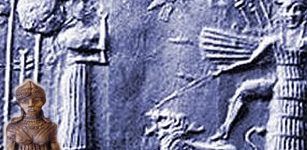 Ereshkigal – Ruler Of The Sumerian Underworld And Most Feared Deity In Mesopotamian Pantheon
Featured Stories | Mar 16, 2017
Ereshkigal – Ruler Of The Sumerian Underworld And Most Feared Deity In Mesopotamian Pantheon
Featured Stories | Mar 16, 2017 -
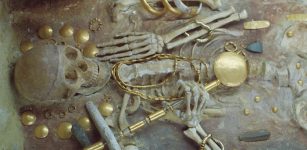 Archaeology Sheds Light On Why Some Ancient Societies Were More Unequal Than Others
Featured Stories | May 25, 2022
Archaeology Sheds Light On Why Some Ancient Societies Were More Unequal Than Others
Featured Stories | May 25, 2022 -
 3,000-Year-Old African Musical Instrument Can Help Modern Medicine
Archaeology | Sep 19, 2018
3,000-Year-Old African Musical Instrument Can Help Modern Medicine
Archaeology | Sep 19, 2018 -
 Glooskap (Gluskap): Mythical Hero Who Defeated Evil Sorcerers And Demon Followers
Featured Stories | Jan 25, 2016
Glooskap (Gluskap): Mythical Hero Who Defeated Evil Sorcerers And Demon Followers
Featured Stories | Jan 25, 2016 -
 Kalaripayattu – 3,000-Year-Old Indian Martial Art From Which Kung Fu And Karate Emerged
Ancient History Facts | Sep 6, 2020
Kalaripayattu – 3,000-Year-Old Indian Martial Art From Which Kung Fu And Karate Emerged
Ancient History Facts | Sep 6, 2020 -
 Utukku: Sumerian Spirit From The Underground That Obeyed The Will Of God Anu
Featured Stories | Jun 17, 2016
Utukku: Sumerian Spirit From The Underground That Obeyed The Will Of God Anu
Featured Stories | Jun 17, 2016 -
 Highly Sophisticated Underground City Of Derinkuyu – Who Were The Master Builders?
Featured Stories | Jul 22, 2014
Highly Sophisticated Underground City Of Derinkuyu – Who Were The Master Builders?
Featured Stories | Jul 22, 2014 -
 On This Day In History: British Forces Captured Gibraltar – On August 3, 1704
News | Aug 3, 2016
On This Day In History: British Forces Captured Gibraltar – On August 3, 1704
News | Aug 3, 2016 -
 Trapped 70,000-Year-Old Artifact Reveals Hidden Information About Early Humans
Archaeology | Dec 5, 2022
Trapped 70,000-Year-Old Artifact Reveals Hidden Information About Early Humans
Archaeology | Dec 5, 2022 -
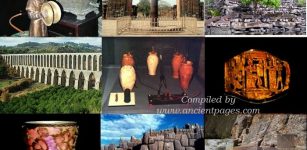 10 Remarkable Advanced Ancient Technologies Ahead Of Their Times
Ancient Technology | Jul 23, 2019
10 Remarkable Advanced Ancient Technologies Ahead Of Their Times
Ancient Technology | Jul 23, 2019 -
 Inscription On Rare Tetrarchic Boundary Stone Found At Biblical Site Of Abel Beth Maacah, Israel Has Been Deciphered
Archaeology | Jan 21, 2025
Inscription On Rare Tetrarchic Boundary Stone Found At Biblical Site Of Abel Beth Maacah, Israel Has Been Deciphered
Archaeology | Jan 21, 2025 -
 Beautiful Gold ‘Lynx’ Earrings Discovered In The Ruins Of The Ancient Lost City Of Ani Go On Display In 2023
Archaeology | Dec 29, 2022
Beautiful Gold ‘Lynx’ Earrings Discovered In The Ruins Of The Ancient Lost City Of Ani Go On Display In 2023
Archaeology | Dec 29, 2022 -
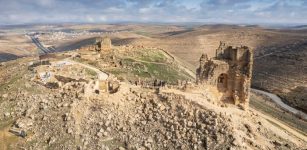 What Are The Huge Ancient Structures Beneath The Zerzevan Castle Discovered By Radar?
Archaeology | Sep 9, 2023
What Are The Huge Ancient Structures Beneath The Zerzevan Castle Discovered By Radar?
Archaeology | Sep 9, 2023 -
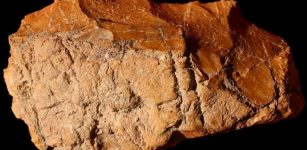 Traces Of Early Humans Discovered In Southern Iran
Archaeology | Sep 25, 2019
Traces Of Early Humans Discovered In Southern Iran
Archaeology | Sep 25, 2019 -
 First AI-Based Method For Dating Archaeological Remains Developed By Researchers
Archaeology | Aug 23, 2022
First AI-Based Method For Dating Archaeological Remains Developed By Researchers
Archaeology | Aug 23, 2022 -
 Native Americans And European Legends Tell Peculiar Beings From The Sky Still Live On The Earth
Featured Stories | May 16, 2018
Native Americans And European Legends Tell Peculiar Beings From The Sky Still Live On The Earth
Featured Stories | May 16, 2018 -
 Ivan The Terrible: Military Arsenal Unearthed Near Moscow
Archaeology | Jan 2, 2016
Ivan The Terrible: Military Arsenal Unearthed Near Moscow
Archaeology | Jan 2, 2016 -
 Jack The Ripper Letter Mystery Solved By Forensic Linguist
Archaeology | Feb 1, 2018
Jack The Ripper Letter Mystery Solved By Forensic Linguist
Archaeology | Feb 1, 2018 -
 On This Day In History: Declaration Of Independence Of The Mexican Empire Is Drafted – On Sep 28, 1821
News | Sep 28, 2016
On This Day In History: Declaration Of Independence Of The Mexican Empire Is Drafted – On Sep 28, 1821
News | Sep 28, 2016 -
 Vikings’ Legacy Is Still Alive In Ireland – DNA, Ancient Ruins And Modern Cites Reveal
Civilizations | May 22, 2021
Vikings’ Legacy Is Still Alive In Ireland – DNA, Ancient Ruins And Modern Cites Reveal
Civilizations | May 22, 2021


